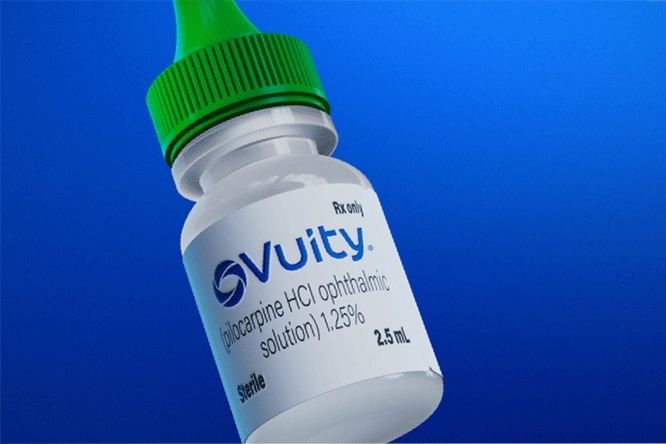
Drug Classification Systems
Drug classification systems are essential frameworks used to categorize drugs based on various criteria, including their chemical structure, effects on the body and mind, and legal status. These systems help in understanding the potential risks associated with drug use, guiding treatment options for addiction or medical conditions, and establishing legal regulations surrounding drug possession and distribution.
1. Chemical Classification
One of the primary methods of classifying drugs is by their chemical makeup. This approach groups drugs that share similar chemical structures or properties. For instance, opioids are classified together because they are derived from opium or designed to mimic its effects. This classification is significant because chemically similar drugs often exhibit comparable pharmacological effects and risks. For example, an individual addicted to one opioid may be more likely to abuse another opioid due to their similar effects on the brain’s receptors.
2. Pharmacological Effects
Another common classification system categorizes drugs based on their effects on the central nervous system (CNS) and overall body function. Drugs can be divided into several categories:
- CNS Depressants: These substances slow down brain activity and bodily functions. Examples include alcohol, benzodiazepines (like Valium), and barbiturates.
- CNS Stimulants: These drugs increase brain activity, heart rate, and blood pressure. Common examples are cocaine and amphetamines.
- Hallucinogens: These substances alter perception and can cause hallucinations. Examples include LSD and psilocybin mushrooms.
- Dissociative Anesthetics: These inhibit pain perception by dissociating the brain’s connection to pain signals; PCP is a notable example.
- Narcotic Analgesics: These relieve pain while inducing euphoria; examples include morphine and heroin.
- Inhalants: A diverse group of breathable substances that produce psychoactive effects; examples include glue or paint thinners.
- Cannabis: This category includes marijuana and its derivatives like THC.
3. Legal Classification
Legal classification systems vary by country but generally categorize drugs based on their accepted medical use versus potential for abuse or harm. In many jurisdictions, drugs are classified into schedules or classes that dictate how they can be prescribed, dispensed, or possessed legally. For instance:
- Schedule I Drugs: These have no accepted medical use in treatment in the U.S., such as heroin or LSD.
- Schedule II Drugs: These have a high potential for abuse but also have accepted medical uses; examples include oxycodone and methamphetamine.
This legal framework helps law enforcement agencies regulate drug-related activities while providing guidelines for healthcare providers regarding prescribing practices.
4. Challenges in Drug Classification
Despite these classification systems’ utility, there is considerable debate among experts about how best to classify certain substances. Variations in classification can lead to confusion regarding a drug’s legality or therapeutic applications. Additionally, as new research emerges about certain substances’ safety profiles or therapeutic benefits (e.g., cannabis), classifications may evolve over time.
In summary, drug classification systems serve multiple purposes: they help identify risks associated with substance use, guide treatment protocols for addiction or medical conditions, inform legal regulations governing drug use, and facilitate research into new therapeutic applications.
Differentiation of Drug Names
In the field of pharmacology, drugs are identified by various names that serve different purposes. Understanding these distinctions is crucial for healthcare professionals, researchers, and consumers alike. Here’s a detailed differentiation among the four types of drug names: generic name, official name, trade name, and chemical name.
- Generic Name: This is the common name assigned to a drug that reflects its active ingredient. The generic name is typically simpler than the chemical name and is used universally to identify the drug regardless of its manufacturer. For example, the generic name for the widely known pain reliever acetaminophen is “acetaminophen” itself, while ibuprofen is another example of a generic name.
- Official Name: Often synonymous with the generic name, the official name refers specifically to the designation given by an authoritative body such as the United States Adopted Names (USAN) Council in the U.S. This name is used in professional settings and literature to ensure clarity and consistency across medical communications. For instance, “ibuprofen” serves as both its generic and official name.
- Trade Name: Also known as a brand or proprietary name, this is the marketing name given to a drug by its manufacturer. Trade names are often catchy and designed for easy recall by both healthcare providers and consumers. For example, “Advil” and “Motrin” are trade names for ibuprofen. Each trade name can be owned by different companies once the drug goes off patent.
- Chemical Name: This complex designation describes the molecular structure of a drug using systematic nomenclature based on chemical composition and structure. Chemical names are primarily used in scientific contexts and can be quite lengthy and intricate; for instance, acetaminophen’s chemical name is N-(4-hydroxyphenyl)acetamide.
In summary:
- Generic Name: Commonly used identifier (e.g., ibuprofen).
- Official Name: Assigned by an authority (often identical to generic).
- Trade Name: Brand-specific identifier (e.g., Advil).
- Chemical Name: Descriptive molecular structure (e.g., N-(4-hydroxyphenyl)acetamide).
Explanation of Numbers in Drug Trade Names
In the pharmaceutical industry, drug trade names often include a number that serves a specific purpose. This number typically indicates the amount of one of the active ingredients or components present in the formulation. For example, in the case of “Tylenol No. 3,” the number “3” refers to the quantity of codeine included in that particular formulation.
The inclusion of such numbers is particularly useful for differentiating between products that may have similar names but contain different dosages or combinations of active ingredients. This differentiation is crucial for both healthcare providers and patients to ensure proper dosing and to avoid potential medication errors.
When a drug has multiple formulations or strengths, these numbers help clarify which specific product is being referred to, thus aiding in effective communication among healthcare professionals and ensuring patient safety. The larger the number in the name, generally, the greater the amount of the controlled substance or active ingredient present in that formulation.
In summary, the number included in a drug trade name indicates an amount of one of the generic components and helps differentiate it from similar products.
Contrast Between Generic and Brand Name Drugs
Generic drugs are medications that contain the same active ingredients as their brand-name counterparts. They are chemically identical in terms of efficacy, safety, dosage form, and administration route.
Brand-name drugs, on the other hand, are marketed under a proprietary name by a specific manufacturer and often come with a patent that protects their formulation for a certain period.
1. Active Ingredients
Both generic and brand-name drugs must have the same active ingredients. This means that they work in the same way to treat the same conditions. The U.S. Food and Drug Administration (FDA) requires that generic drugs demonstrate bioequivalence to their brand-name counterparts, meaning they must deliver the same amount of active ingredient into a patient’s bloodstream in the same amount of time.
2. Inactive Ingredients
While generics must contain the same active ingredients, they can differ in inactive components such as fillers, binders, or coloring agents. These differences may affect factors like taste or appearance but do not impact the therapeutic effect of the drug.
3. Cost Differences
One of the most significant contrasts between generic and brand-name drugs is cost. Generic medications are typically 80-85% less expensive than their brand-name equivalents. This price difference arises because generic manufacturers do not incur the costs associated with research and development that brand-name companies face when creating new drugs.
4. Regulatory Standards
Both types of drugs must meet stringent regulatory standards set by agencies like the FDA or Health Canada. Generic drug manufacturers are required to follow Good Manufacturing Practices (GMP) similar to those for brand-name drugs. The FDA conducts inspections to ensure compliance with these standards.
5. Bioequivalence Requirements
Generic drugs must be shown to be bioequivalent to their brand-name counterparts through studies demonstrating similar absorption rates and overall effectiveness. A recent study indicated an average difference of only 3.5% in absorption between generics and their branded versions.
6. Market Competition
The market dynamics also differ; once a brand-name drug’s patent expires, multiple generic manufacturers can enter the market, leading to competition that drives prices down further for consumers.
In summary, while both generic and brand-name drugs serve similar therapeutic purposes with identical active ingredients, they differ significantly in cost, inactive ingredients, market competition dynamics, and regulatory pathways for approval.
Definition and Explanation of Drug Sales Restrictions
Over-the-Counter (OTC) Drugs
Over-the-counter (OTC) drugs are medications that can be purchased without a prescription. These drugs are considered safe and effective for use by the general public without the need for a healthcare provider’s supervision, provided they are used according to the instructions on the label. The U.S. Food and Drug Administration (FDA) regulates OTC drugs, ensuring they meet specific safety and efficacy standards before being approved for sale.
Restrictions:
- Labeling Requirements: OTC drugs must have clear labeling that includes active ingredients, uses, warnings, directions for use, and other pertinent information.
- Dosage Limitations: There may be restrictions on the maximum dosage available in a single package to prevent misuse or overdose.
- Age Restrictions: Some OTC medications may have age restrictions due to safety concerns, particularly in children.
- Sales Locations: While generally available at pharmacies, supermarkets, and convenience stores, certain OTC medications (like pseudoephedrine) may be subject to additional regulations regarding where they can be sold.
Legend Drugs
Legend drugs, also known as prescription drugs, require a valid prescription from a licensed healthcare provider for purchase. These medications are typically more potent or have a higher potential for side effects compared to OTC drugs. The FDA classifies these substances as requiring medical supervision due to their complexity or risk factors associated with their use.
Restrictions:
- Prescription Requirement: A patient must obtain a prescription from a licensed healthcare professional (e.g., physician, dentist) before purchasing legend drugs.
- Refill Limitations: Many legend drugs have limitations on refills; some may require follow-up consultations with the prescribing physician before additional refills can be authorized.
- Controlled Access: Certain legend drugs may only be dispensed by specific types of pharmacies or under particular conditions due to their potential risks.
- Monitoring Programs: Some states have prescription drug monitoring programs (PDMPs) that track prescriptions of certain legend drugs to prevent abuse.
Controlled Substances
Controlled substances are drugs that fall under strict regulatory control due to their potential for abuse and addiction. The Controlled Substances Act (CSA) categorizes these substances into schedules based on their medical use, potential for abuse, and safety or dependence liability.
Restrictions:
- Scheduling System: Controlled substances are classified into five schedules (I-V), with Schedule I having the highest potential for abuse and no accepted medical use (e.g., heroin), while Schedule V has lower potential for abuse and accepted medical uses (e.g., cough preparations containing less than 200 mg of codeine per 100 mL).
- Prescription Regulations: Prescriptions for controlled substances often have stricter requirements than those for legend drugs; they may need to be written on special prescription pads or electronic systems that comply with state regulations.
- Quantity Limits: There are often limits on the quantity of controlled substances that can be prescribed at one time or over a specified period.
- Record Keeping: Healthcare providers must maintain detailed records of prescriptions issued for controlled substances to comply with federal and state laws.
In summary, each category of drug—OTC, legend, and controlled substances—has specific restrictions designed to ensure safety and proper usage among consumers while preventing misuse or abuse.
Drug Actions and Related Terms
In the field of pharmacology, various terms are used to describe drug actions. Understanding these terms is crucial for healthcare professionals, researchers, and students alike. Below are some key terms that indicate different aspects of drug actions:
1. Active Ingredient
An active ingredient is any component in a drug that provides pharmacological activity or has a direct effect on the diagnosis, cure, mitigation, treatment, or prevention of disease. It is the substance responsible for the therapeutic effect of the medication.
2. Bioequivalence
Bioequivalence refers to the relationship between two preparations of the same drug that have similar bioavailability when administered in the same molar dose under similar conditions. This term is particularly relevant for generic drugs, which must demonstrate bioequivalence to their brand-name counterparts to gain FDA approval.
3. Dosage Form
The dosage form is the physical form in which a drug is produced and dispensed. Common forms include tablets, capsules, injectables, and topical applications. The dosage form can significantly influence the drug’s absorption and overall effectiveness.
4. Drug Product
A drug product refers to the finished dosage form that contains a drug substance along with other active or inactive ingredients. It encompasses all formulations intended for administration to patients.
5. Generic Drug
A generic drug is a medication that is chemically identical to a brand-name drug but marketed under its chemical name rather than a proprietary name. Generic drugs must meet stringent FDA standards for safety and efficacy.
6. Brand Name Drug
This term describes drugs marketed under a proprietary name protected by trademark laws. Brand name drugs often have higher costs due to marketing expenses associated with their development and promotion.
7. Pharmacodynamics
Pharmacodynamics involves studying how drugs affect biological systems and their mechanisms of action at various sites within the body. This includes understanding receptor interactions, enzyme inhibition, and other biochemical processes influenced by drugs.
8. Pharmacokinetics
Pharmacokinetics refers to how the body absorbs, distributes, metabolizes, and excretes drugs over time. Key parameters include absorption rate, distribution volume, metabolism (biotransformation), and elimination half-life.
9. Indication
An indication is a valid reason to use a certain medication based on clinical evidence supporting its effectiveness for specific conditions or diseases.
10. Contraindication
A contraindication indicates situations where a particular drug should not be used because it may cause harm or adverse effects in certain patient populations or conditions.
Understanding these terms helps clarify discussions about medications’ roles in therapy and enhances communication among healthcare providers regarding treatment options.
Drug References Available Today
When discussing drug references available today, it is essential to categorize them based on their functions and the type of information they provide. Below are some of the primary categories of drug references:
1. Drug Scheduling Information Drug scheduling refers to the classification of drugs into different schedules based on their potential for abuse, accepted medical use, and safety or dependence risk. In the United States, the Drug Enforcement Administration (DEA) categorizes drugs into five schedules:
- Schedule I: Drugs with no currently accepted medical use and a high potential for abuse (e.g., heroin, LSD, marijuana).
- Schedule II: Drugs with a high potential for abuse that may lead to severe psychological or physical dependence (e.g., cocaine, methamphetamine).
- Schedule III: Drugs with a moderate to low potential for physical and psychological dependence (e.g., anabolic steroids, ketamine).
- Schedule IV: Drugs with a low potential for abuse and low risk of dependence (e.g., Xanax, Valium).
- Schedule V: Drugs with lower potential for abuse than Schedule IV (e.g., cough preparations containing less than 200 mg of codeine).
2. Pharmacological References These references provide detailed information about the pharmacology of various drugs, including their mechanisms of action, therapeutic uses, side effects, interactions with other substances, and contraindications. Examples include:
- Physicians’ Desk Reference (PDR): A comprehensive resource that includes prescribing information for medications approved by the FDA.
- Lexicomp: An online database offering drug information including dosing guidelines and clinical considerations.
3. Toxicology References Toxicology references focus on the harmful effects of drugs and substances on human health. They provide insights into overdose management, poisoning symptoms, and antidotes. Notable resources include:
- Toxnet: A database that provides access to toxicology data from various sources.
- Micromedex: A comprehensive database that includes toxicology information along with drug interactions.
4. Substance Abuse Resources These resources focus specifically on substance misuse and addiction treatment options. They often include statistics on drug use trends and educational materials aimed at prevention. Examples include:
- National Institute on Drug Abuse (NIDA): Provides research-based information about drug abuse and addiction.
- Substance Abuse and Mental Health Services Administration (SAMHSA): Offers resources related to substance use disorders and mental health.
5. Clinical Guidelines Clinical guidelines offer evidence-based recommendations regarding the use of specific drugs in treating various conditions. These guidelines are typically developed by professional organizations such as:
- American College of Cardiology (ACC): Provides guidelines on cardiovascular medications.
- American Diabetes Association (ADA): Offers recommendations regarding diabetes management medications.
In summary, today’s drug references encompass a wide range of resources that provide critical information about drug scheduling, pharmacology, toxicology, substance abuse prevention, and clinical guidelines.
Characteristics Important in Choosing the Best Drug Reference
When selecting a drug reference, several key characteristics should be considered to ensure that the information is reliable, comprehensive, and applicable to clinical practice. Here are some of the most important factors:
1. Evidence-Based Information
A top-quality drug reference should provide evidence-based information derived from rigorous scientific studies. This includes data from randomized controlled trials, systematic reviews, and meta-analyses that evaluate the efficacy and safety of medications. The reliability of the information is enhanced when it is supported by primary literature and peer-reviewed articles.
2. Comprehensive Coverage
The reference should cover a wide range of medications, including both common and less frequently used drugs. It should also include various formulations (e.g., oral, injectable) and dosage forms. Comprehensive coverage ensures that healthcare providers can find information on all medications they may encounter in practice.
3. Updated Content
Pharmacology is a rapidly evolving field; therefore, it is crucial that the drug reference is regularly updated to reflect the latest research findings, clinical guidelines, and changes in drug availability or labeling. An up-to-date resource helps clinicians make informed decisions based on current best practices.
4. User-Friendly Format
The layout and organization of the drug reference should facilitate easy navigation and quick access to information. A user-friendly format allows healthcare professionals to efficiently locate relevant details such as dosing recommendations, side effects, interactions, and contraindications without unnecessary delays.
5. Clinical Decision Support Tools
Incorporating clinical decision support tools can enhance the utility of a drug reference. These tools may include calculators for dosing adjustments based on patient-specific factors (e.g., renal function), alerts for potential drug interactions, or guidelines for special populations (e.g., pediatrics or geriatrics). Such features help clinicians tailor medication therapy to individual patient needs.
6. Authoritative Sources
The credibility of a drug reference is significantly influenced by its authorship and editorial oversight. References developed by recognized experts in pharmacology or affiliated with reputable medical institutions are more likely to provide accurate and trustworthy information.
7. Accessibility
Finally, accessibility is an important characteristic to consider when choosing a drug reference. It should be available in formats that suit different users’ needs—whether as a physical book, an online database, or a mobile application—ensuring that healthcare providers can access critical information whenever necessary.
In summary, when selecting a drug reference for clinical use, it is essential to prioritize evidence-based content, comprehensive coverage of medications, regular updates, user-friendly design, integrated clinical decision support tools, authoritative authorship, and overall accessibility.
How to Evaluate Drug Information Websites
Evaluating drug information websites is crucial for ensuring that the information you access is accurate, reliable, and relevant to your health needs. Here’s a step-by-step guide on how to assess these resources effectively:
1. Identify the Source of the Website
- Who runs the site? Check if the website is managed by reputable organizations such as government health agencies (e.g., FDA, CDC), medical schools, or recognized nonprofit organizations (e.g., American Medical Association).
- Trustworthiness: Ensure that the organization has a history of providing balanced and scientifically accurate information.
2. Understand the Purpose of the Website
- What is the goal? Determine whether the website aims to inform the public about drug-related issues or if it primarily seeks to sell products or promote specific viewpoints.
- Objective vs. Commercial: Trustworthy sites focus on delivering factual information rather than promoting sales or personal opinions.
3. Assess Funding Sources
- Who pays for the site? Look for transparency regarding funding sources. Websites funded by pharmaceutical companies may present biased information favoring their products.
- Advertisement Clarity: Ads should be clearly marked; be cautious of content that appears promotional but lacks clear labeling.
4. Evaluate Information Quality
- Research Basis: Good drug information should be based on scientific research and not anecdotal evidence. Check if claims are supported by studies published in peer-reviewed journals.
- Balanced Presentation: Reliable sites do not promote one treatment over another without presenting all relevant facts.
5. Review Content Selection and Review Process
- Editorial Standards: Investigate whether there is an editorial board composed of health experts who review content for accuracy.
- Content Updates: Ensure that there is a process in place for regularly updating information, reflecting new research findings or changes in guidelines.
6. Check References and Citations
- Source Credibility: Quality websites provide links or citations to original research articles or clinical guidelines from reputable sources.
- Transparency in Information Origin: This allows users to verify claims independently.
7. Look for Date of Information
- Timeliness: Verify when the content was written, reviewed, or updated. Drug information can change rapidly due to new research findings or regulatory updates.
- Relevance of Data: Outdated information may lead to incorrect conclusions about drug safety or efficacy.
8. Privacy Policy Examination
- Personal Data Use: Review how your personal data will be used if you interact with the site (e.g., signing up for newsletters). A trustworthy site will have a clear privacy policy outlining data usage practices.
9. Cross-Verification with Other Sources
- Consistency Check: After finding potentially useful drug information, cross-check it with other reliable sources to confirm its accuracy.
- Consult Healthcare Providers: Discuss any significant findings with your healthcare provider before making decisions based on online information.
By following these steps, you can better navigate drug information websites and ensure that you are relying on credible and accurate resources for your health decisions.







